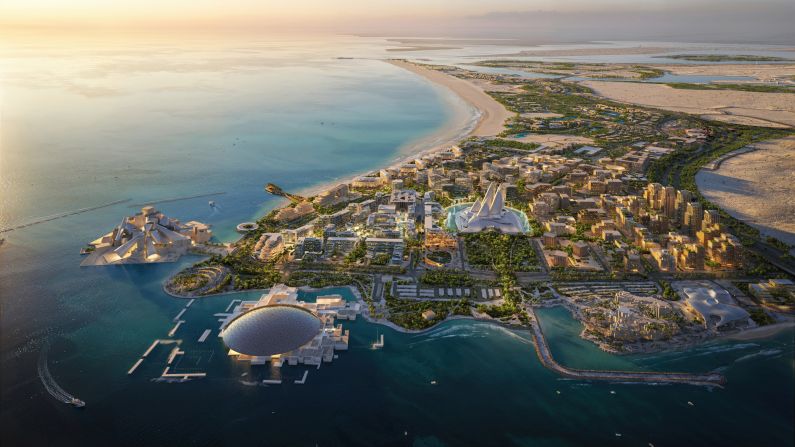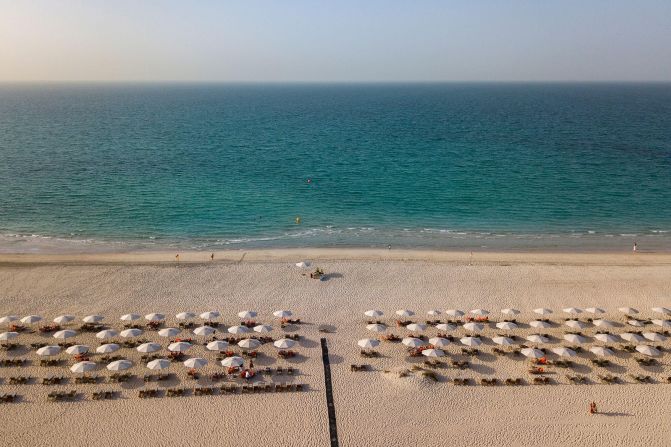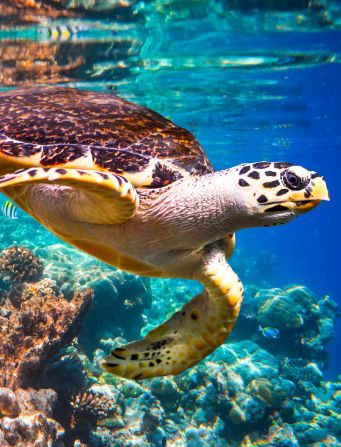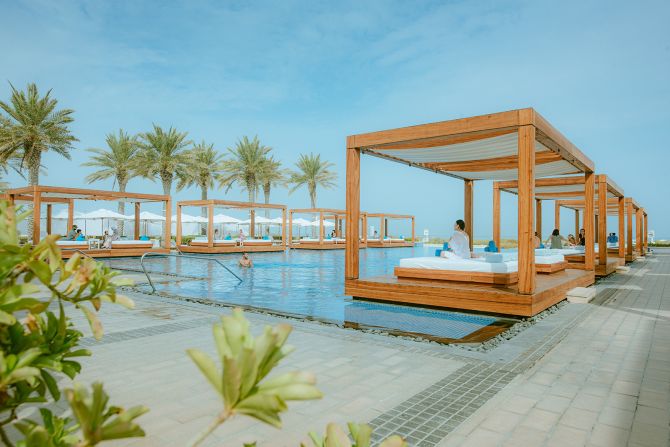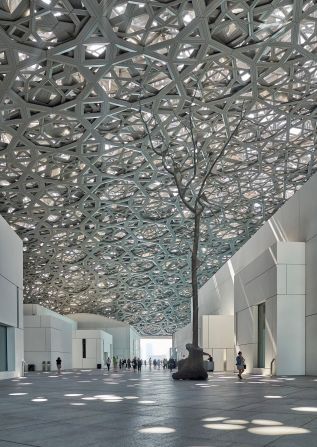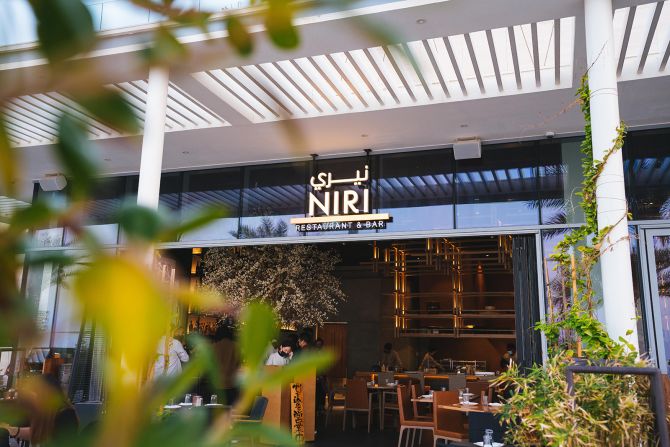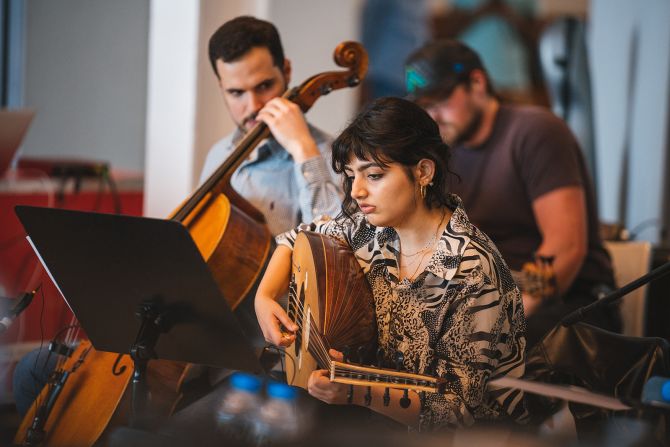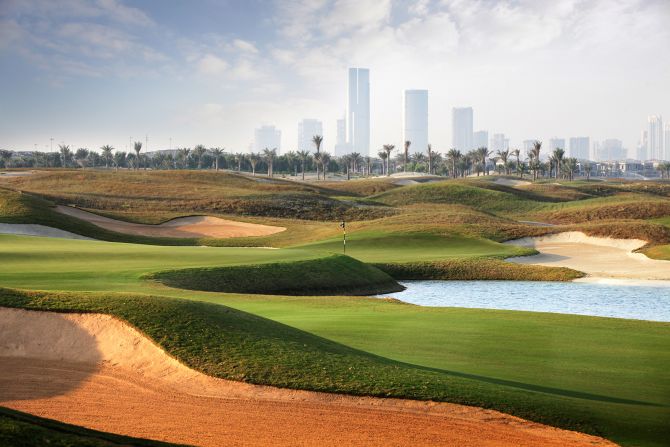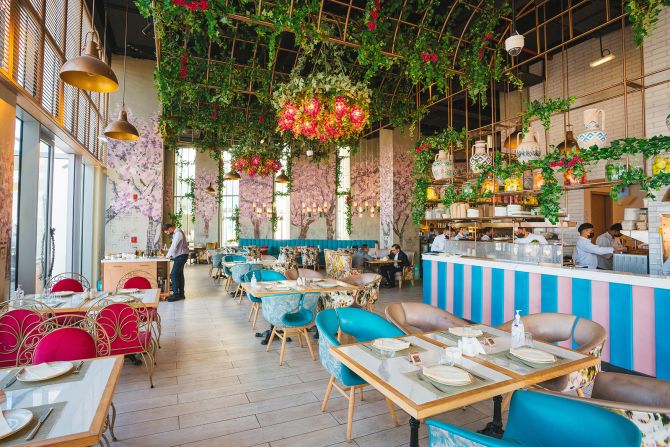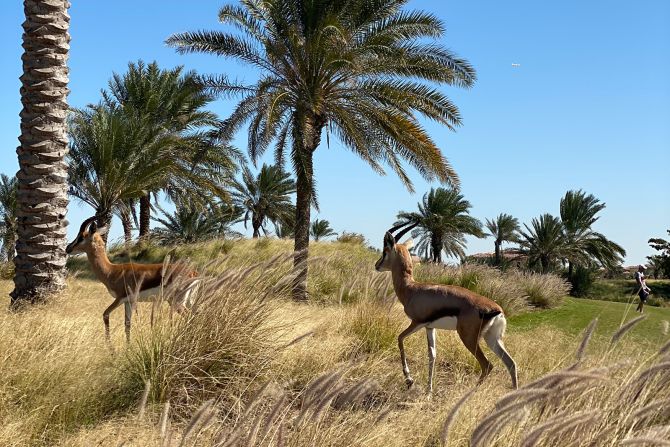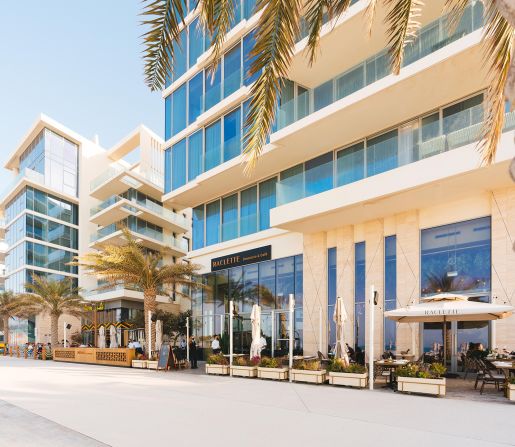Editor’s Note: This series may have adjacent ads by the country it highlights. CNN retains full editorial control over subject matter, reporting and frequency of the articles and videos, in compliance with our policy.
CNN
—
Right now, if you’d like to visit the Louvre and the Guggenheim in one day, you’d need to cross international borders.
But with Abu Dhabi’s long-awaited cultural district on Saadiyat Island nearing completion, by the end of the year, you’ll be able to walk between them.
The new cultural district will feature international outposts of the world-famous Louvre and Guggenheim museums, along with other institutions, including an immersive digital art space from teamLab and a natural history museum.
“Many places around the world have fantastic cultural institutions; many of them are much older than these. But I think the proximity of all of them is what makes this quite special,” says Mohamed Khalifa Al Mubarak, chairman of the Department of Culture and Tourism in Abu Dhabi.
The project is piloting a network of “cool paths,” which implement nature-based shading techniques, to allow visitors to navigate between the museums and cultural sites on foot, says Al Mubarak.
The multi-billion-dollar, 2.43 square kilometer museum complex is one of the largest cultural investments of its kind in the world, and its design — by “starchitects” like Jean Nouvel, Frank Gehry, and Norman Foster — is expected to be as much of an attraction as its artworks.
Dr Peter Magee, director of the Zayed National Museum, currently under construction, describes the district as “a constellation of stars” illuminating the region’s history, culture, and art.
The project broke ground in the mid-2000s and has not been without controversy. Human Rights Watch raised concerns about conditions for migrant workers, which were refuted by Abu Dhabi’s Tourism Development and Investment Company (TDIC), which was overseeing the project. Others have questioned whether the Unites Arab Emirates’ censorship laws are aligned with the values of the Louvre and Guggenheim.
But Abu Dhabi will be hoping the complex, which will have more than 1.7 million square feet of space across its five main institutions, will become a world-renowned tourist destination in the same way as Hong Kong’s 98-acre (40-hectare) West Kowloon Cultural District and Berlin’s 21-acre (8.6-hectare) “Museum Island.”
As several of the museums prepare to open later this year, take a look at what to do in Saadiyat Cultural District.
Natural History Museum
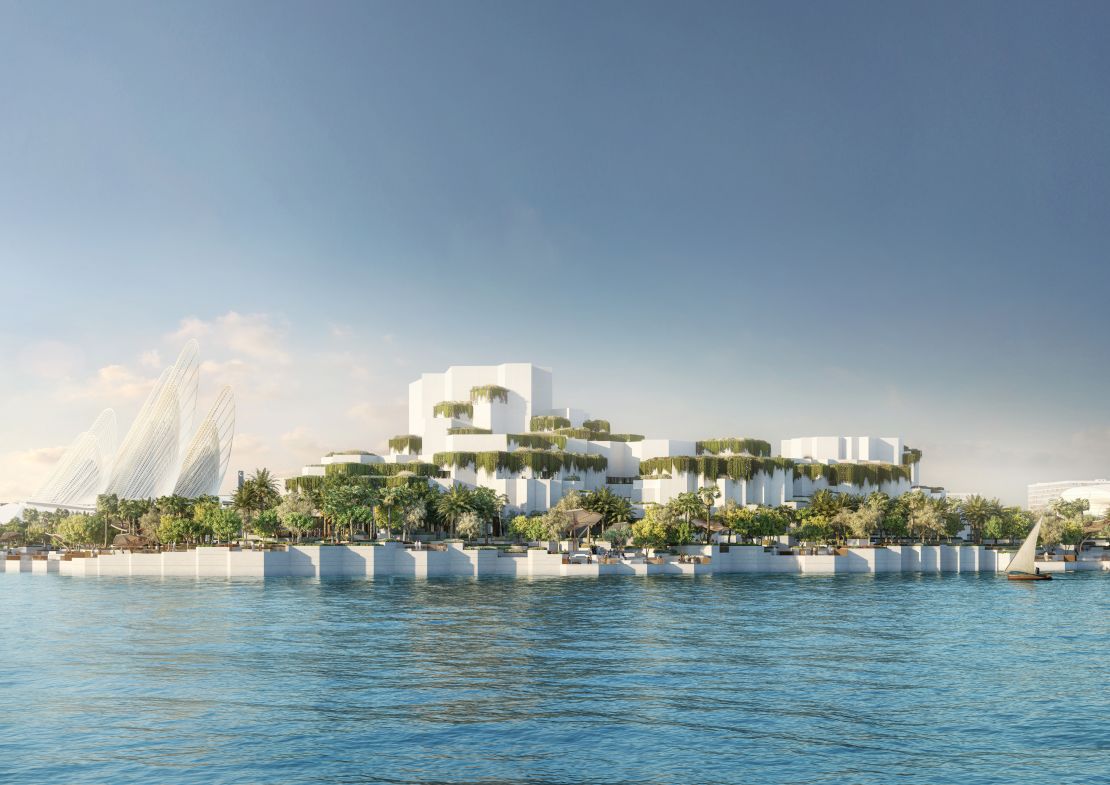
Abu Dhabi’s science-focused museum explores the 13.8-billion-year story of our universe, complete with a research center. When it opens later this year, the 35,000-square-meter (377,000-square-foot) museum will be the largest of its kind in the region.
Its star attraction is Stan, the world’s most complete Tyrannosaurus rex skeleton, which was purchased for $31.8 million in 2020. The 67-million-year-old fossil will be on display alongside the Murchison meteorite, which crash-landed in Australia in the 1960s and contains organic compounds never identified on Earth, as well as “pre-solar grains” formed before our own sun, and to date, the oldest material discovered on Earth.
Zayed National Museum
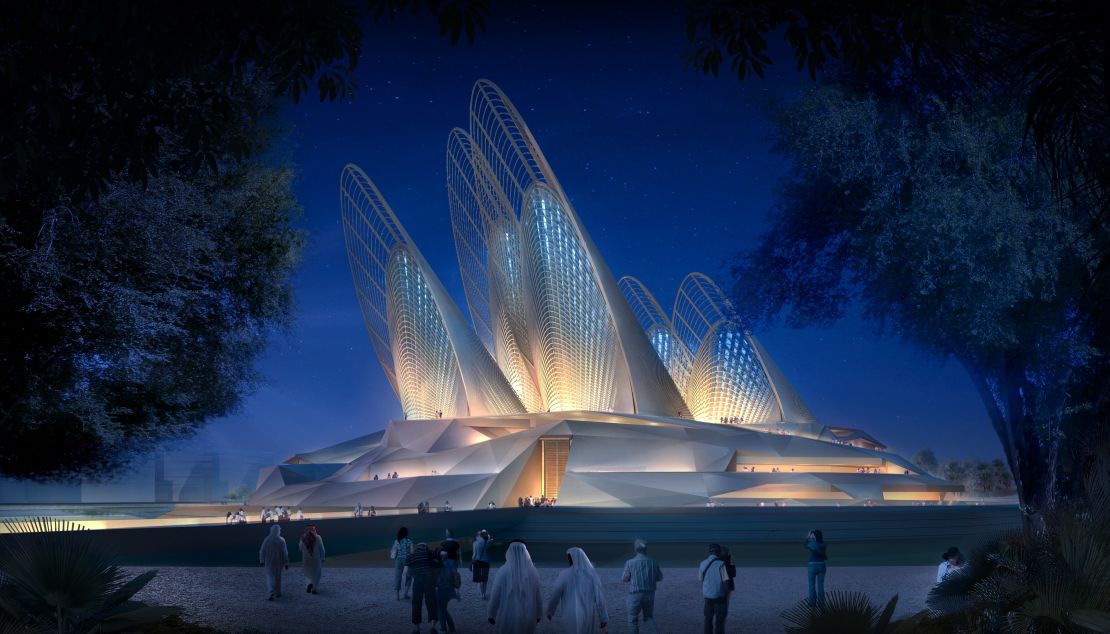
Named after the UAE’s founding father, the late Sheikh Zayed bin Sultan Al Nahyan, this Foster + Partners-designed museum will showcase Emirati history and culture through six permanent indoor galleries.
Opening late 2025, visitors can expect to journey through 300,000 years of local and regional history, including the evolution of the nation’s unique desert landscape, the settlement of Bedouin ancestors, and the role of the UAE as a global trading hub.
Louvre Abu Dhabi
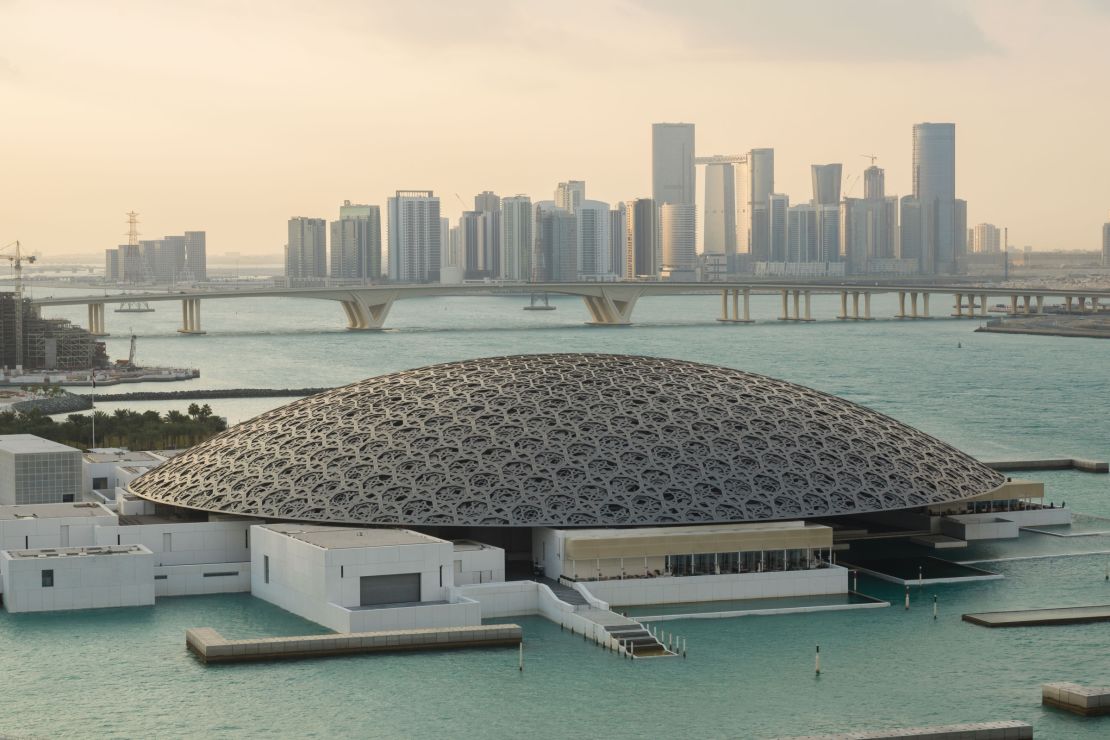
Opened in 2017, the Louvre Abu Dhabi is the first international outpost of the iconic French museum. Its 23 galleries showcase a range of works, from Ancient Egyptian sculptures to Italian Renaissance masterpieces to 20th-century abstract paintings. The collection includes a number of works of regional significance, too, including a 3,000-year-old Middle Eastern gold bracelet, and the oldest known photograph of a woman wearing a veil.
The museum — designed by Pritzker Prize-winning French architect Jean Nouvel — has become an Abu Dhabi icon, with a domed roof and geometric patterns inspired by elements common in Islamic architecture.
Guggenheim Abu Dhabi
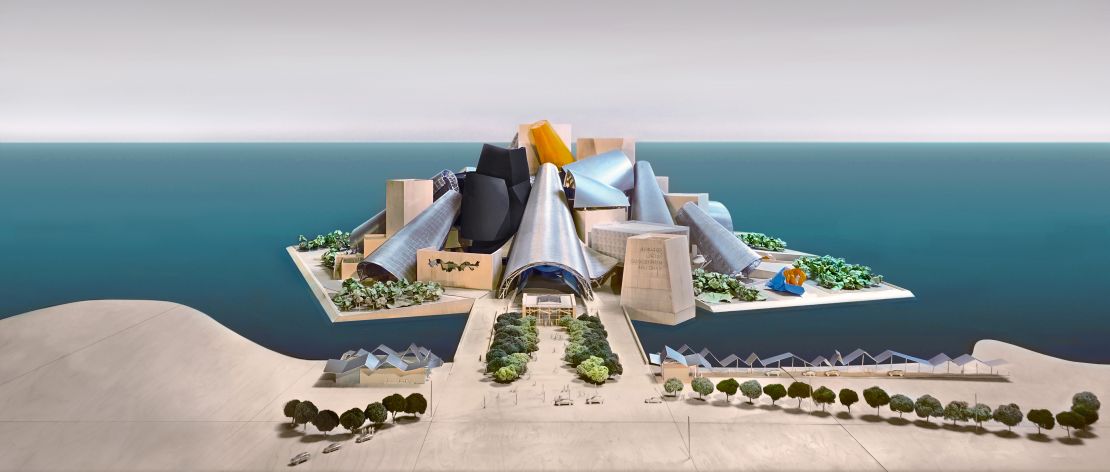
First opened in New York in 1959 in a groundbreaking building by Frank Lloyd Wright, the Solomon R. Guggenheim Museum now has outposts in Bilbao and Venice, and very soon, Abu Dhabi.
The collection of contemporary art will be housed in an experimental building designed by American architect Frank Gehry, and construction is expected to be completed by the end of 2025.
Focused on work produced since the 1960s, the Guggenheim Abu Dhabi will particularly highlight West Asian, North African and South Asian art and commission original works for its expansive galleries.
teamLab Phenomena
This immersive art experience just opened in Abu Dhabi
Japanese art collective teamLab opened its first immersive digital art experience in the UAE earlier this year with teamLab Phenomena in Saadiyat Cultural District. Designed in collaboration with Abu Dhabi firm MZ Architects, the 17,000-square-meter (183,000-square-foot) cloud-like building is teamLab’s largest location to date and features 25 installations that blend science, art, and technology.
For example, “Floating Microcosms,” an exhibit in the “wet” area of the museum, features unanchored ovoid sculptures in ankle-deep water. As visitors wade through the water, the waves ripple out, toppling the sculptures and changing their sound and color, creating tactile, unique experiences.
Beyond museums: What else to do on Saadiyat Island
Exploring Saadiyat Island, Abu Dhabi’s coastal retreat
-
Abrahamic Family House: Designed by Ghanaian British architect David Adjaye, this interfaith center features a mosque, church and synagogue on one site, as a symbol of peaceful coexistence and a celebration of diversity.
-
Bassam Freiha Art Foundation: The only private art foundation in Saadityat Cultural District, this non-profit gallery offers free entry to view the artworks accrued by its founder, art patron Bassam Said Freiha, who has collected for the past 50 years.
-
Dine at Mamsha Al Saadiyat: This beachfront pedestrian promenade is bursting with cafés and restaurants, including the Bib Gourmand awarded Beirut Sur Mer; Niri, a sushi and highball bar listed as one of the Middle East’s 50 Best Restaurants; and Emirati coffee specialists Coffee Architecture.
-
Soul Beach: Also known as Mamsha Beach, this stretch of powdery white sand and turquoise water is a favorite with locals and tourists alike. As with most beaches in the UAE, visitors have to pay for a day pass, starting from AED 125 ($34) for adults.
-
Beach clubs: Just along the coast from Soul Beach, Saadiyat Beach is littered with beach clubs. The expansive Saadiyat Beach Club has day passes starting from AED 225 ($61), and the Rixos Hotel offers a luxurious all-inclusive day package (AED 695, $189). Kai Beach Club provides a more affordable option, starting from AED 150 ($41), while the Buddha-Bar Beach at The St Regis Saadiyat Island Resort offers beach access in its classic weekend brunch.
-
Manarat Al Saadiyat: A dynamic arts center hosting exhibitions, workshops and events, including film screenings, comedy nights, and the annual Abu Dhabi Art Fair.
-
Berklee Abu Dhabi: In addition to its education programs, the first Middle East location for the Massachusetts-based institute of contemporary music, dance and theater also hosts public performances. The building, designed by Foster + Partners, initially served as the UAE’s pavilion at the World Expo 2010 in Shanghai, China, and was relocated to the cultural district when the event concluded.
-
Saadiyat Beach Golf Club: Designed by champion golfer Gary Player, this scenic beachfront course has views across the Arabian Gulf, incorporating saltwater lakes and beach dunes.
Additional reporting by Kayla Smith, CNN.


